Thea Render 1.1 Review by Sandro Sorce
Following SandroS latest Carapicuiba House posting and the pending release of Thea Render 1.1, I asked him if he could write a review about Thea, a render engine developed by Solid Iris Technologies. SandroS was very kind to agree, and in his article you will find information on how Importing, Materials, Browsing, IBL, Instancing, Interactive Rendering, Tone Mapping, Relight and Repainting all work in Thea Render v1.1
Preface by Sandro Sorce
This is the first time I’ve written something like this so I hope I’m able to deliver at least some useful information. Please feel free to ask about anything else you’d like to know and I’ll do my best to answer. By the way, I should probably mention that I am a Thea Render beta tester, so this review isn’t about giving a rating (of course my rating would be 10/10), but to explain the tools that really help with setting up geometry, lighting and materials.
For a look at how to use Thea Render in general, there are a number of video tutorials available on the Tutorial Page of the Thea Render website and many others on the Forum. In particular, look out the new tutorials made for the latest update (v1.1) which includes lots of improvements to workflow and UI, lots of fixes, and a number of great new features.
Thea Render v1.1
Price:
- Thea Render License: 295
- Thea Render Node License: 95
- Plugin: 29.50 – 39.50
Platform:
Windows / Mac OSX / Linux
Developer:
Soild Iris Technologies
Website:
www.thearender.com
Introduction
Thea Render is a render engine offering both biased and unbiased rendering techniques, together with a number of innovative features, a fantastic material ‘lab’ and an advanced studio.
Switching from biased rendering to unbiased is simply a matter of selecting from the list of available engines as both systems use the same lights and materials.
In terms of biased rendering, Thea Render offers a number of render methods including Photon Mapping, Final Gathering and Irradiance Caching. As with other biased engines, there are a whole array of settings that can be tweaked to achieve the best compromise of render quality vs. time.
As good as these engines are (and they are excellent), for me its all about the unbiased engines. And here Thea Render offers two extra options TR1 and TR2. Ultimately, both engines will reach the same solution, but TR1 is optimized for open scenes that are lit with large emitters or with a HDRI. Product shots are a good example of where TR1 excels and will clear much faster than TR2.
However, for scenes like interiors, or scenes that have more challenging lighting (such as where there are lots of caustics or SSS), TR2 is the recommended engine as it generally handles these scenes better.
In common with most other unbiased engines, there are very few settings to tweak in Thea Render. The only quality setting is the the Super Sampling (SS). When set to none, the scene will be rendered at the specified resolution. With normal SS the render resolution is doubled and when set to high it is tripled. The image is then down sampled back to required resolution with beautifully smooth antialiasing, and with no render time penalty as the GI calculations are not affected by the SS.
Importing scenes
Of course, before anything is rendered, we need some geometry in the scene. Models can be imported either directly, using one of the supported formats (3DS or OBJ two name just two), or one of the plugins can be used. Currently, there are plugins for most of the major 3D applications, including modo, 3ds Max, Cinema4D, Softimage, Rhino, Blender and SketchUP.
Personally, I use modo for modeling and mapping and the exporter does a great job of getting the geometry, mapping, cameras, basic materials and environments into Thea Renders own studio environment.
Once inside Thea Render, I like to organize my ‘setup’ layout as shown below as this gives me access to all the tools i need. On the left panel is the tree view with all scene objects, lights and materials, and below that is the object properties panel. In the center is the main OpenGL/Interactive Render view (quad view is also available). To the right is where I spend most of my time – the material lab. Finally, at the bottom is the Browser, which is another extremely powerful feature (more about that later).
The Material Lab
Thea Render’s material Lab is one of my favorite parts of the software. The new, larger preview windows for both materials and textures makes it easy to see what your material will look like and there are lots of tone mapping options on a per map basis. You can also add or multiply maps together using the Texture Layers feature.
All these options make it very easy to create material variations without having to edit your images externally (In Photoshop for example) and then import them back in. They also allow the use of the same map for different material parameters (e.g. diffuse, reflection, roughness, etc.), keeping memory usage as low as possible.
As you would expect from an unbiased renderer, the material parameters are physically based, and Thea Render supports SSS, Volumetrics and Displacement.
‘Medium’ (e.g. fog) can be mapped volumetrically to create some great effects. In the ‘cellar’ render, for example, I assigned a procedural volumetric shader to the fog density to break the fog up. (This scene was modeled based on a discussion thread on CGArchitect).
There is also a Translucency parameter on the Basic material which is very similar to Thin SSS. All of the leaves in the Carapicuiba House renders make use of this translucency. It clears really fast and is perfect for things like leaves, blinds and all things translucent.
Finally, different material types can be mixed and layered to create all sorts of effects (layers of dirt and rust for example).
The manual goes into much more detail about the various material types and there are tutorials on material creation on the Thea Render website.
A very useful feature is the global mapping option. When you have variations of the same map in different slots (as is often the case), you can scale them all at once using the mapping options in the Transform tool. This means you don’t have the tedious task of changing them all one by one.
The Browser
The Browser has a number of uses. First off, as the name suggests, you can use it to organize and search your Thea Render assets. I say assets because you can organize not only materials, but also your environments, your models, IES lights and so on. But the browser is so much more…
Everything has drag and drop functionality, so for example it’s easy to pick a material in your material library and drag it into the scene. But this can also be done with models too. so any models you have saved as an asset (for example furniture pieces) you can drag into the scene. The same is true for IES lights, and each one has a preview so you can get an idea of what the light cone is like.
Finally, the best part (for me at least) is the environments feature. Thea Render lets you save the physical sky, or HDRI + Sun combination as an environment, making it possible to just drag that environment back into the scene whenever you need it. You wont believe how much time (and tediousness) this saves.
The screenshots show different asset presentation to hopefully give an idea of how powerful a feature this browser is
Materials (shows the largest preview size. There are 3 different preview sizes):
Skies (preview gives an extremely useful overview of the HDRI or the Physical Sky):
IES (side preview shows light cone shape and definition):
Models (these are part of a free collection made available on the forums):
Physical Sky / HDRI Widget
This very simple tool is a little gem and makes it easy to experiment with different lighting environments. The gizmo appears in the top right corner of the OpenGL viewport and gives an overview of the selected HDRI used in the environment lighting, together with an icon for the position of the Thea Render sun. A similar gizmo is also available with the Thea Render physical sky system.
The environment is always shown relative to the camera view, so you always know exactly how the HDRI is rotated. The sun icon can simply be dragged over the sun in the HDRI to get a perfect lighting match. Of course the sun parameters (size, color, etc.) can also be manually tweaked to better match the HDRI. You can see in the browser below the viewport I have saved a number of environments which can be dragged into the viewport for instant use.
Interactive Render
Thea Render’s interactive render (IR) can be used for final renders if required, but for me its main use is as a preview render for quickly setting up lights, environments and materials.
Like the final render engines, IR is also available with biased and unbiased (Monte Carlo) rendering but here there are fewer options.
It’s difficult to ‘measure’ how fast the preview is but as a guide, my Carapicuiba House scene takes a few seconds to build and shows a usable preview with little waiting. The scene has displacement on walls and soil, lots of instancing of trees, plants and pebbles, translucency and of course, lots of blurry reflections. IR performance has been improved considerably with the latest update, and even scenes with massive instancing only take a few seconds to build. I’m not quite sure how they managed it but it certainly makes scene set up a more fluid process. Subjectively, I’d say that Thea Render’s IR performance is excellent.
Of course with low to medium complexity scenes (product shots, simple exterior shots), IR is instant and clears really fast.
Instancing Tools
Thea Render’s instancing is robust to say the least. Again the update has significantly improved the instancing engine and the results are pretty amazing. I was doing some tests to see how far I could push the poly count. My original target was to hit 1 trillion polys but after a couple of attempts I realized I could go much further. In the example below I populated 10 million instances of a 1/2 million poly tree, for a total of 5 trillion (5000 billion) polys. In this case Thea Render was only using 6GB out of 12GB memory so I could have gone further still. As you can see from the render times, despite the huge poly counts, after the first minute this test render is almost clear.
The instancing tools are very easy to use, though in the future I’d love to see a few more options for populating. You can randomize some parameters, such as scale, rotation, normal and direction and you have a choice of randomly populating weighted by image map, or you can brush on the instances by hand. In either case just select the ‘canvas’ mesh and the instance mesh, select the population method and instance away.
Darkroom
The darkroom is a separate area where the final renderings takes place. There are some great features here too that make testing and post production that much easier and more enjoyable. In the screenshot you can see the Darkroom, with separate tabs for Display, Relight, History and Network Rendering.
In the example below the history tab can be seen in action, allowing you to easily compare different renders. 2 or 4 renders can be chosen for a split view comparison. In the example I have a sunny and an overcast render being compared.
The thumbs below show the renders in the buffer, together with some useful info such as render time and no. of passes. you can also load previously saved images into the buffer and can restart these renders if you want.
History is definitely a big time saver as you can easily compare test renders without having to go to an external application.
In the Display tab Thea Render offers a number of post processing options. The screenshot below shows some of the PP options, so things like sharpness, burn and vignetting can all be adjusted during or after the render. After any changes simply hit the refresh button to see your changes live in the viewport.
With the ‘Channel’ dropdown, you can select any one of the chosen render channels for use in Post Production. There are a number of available channels such as Depth (which can be adjusted during rendering (near/far distance). The channels in the blue font are only available in Biased rendering modes (in general, blue font in Thea Render = biased only function).
One further analysis available in the Darkroom is the photometric light analysis, which shows the temperature of the light hitting different surfaces. This is a very useful tool used in the design of lighting schemes. My example probably isn’t the best but this is a very useful tool in designing, for example, kitchen lighting, where there are recommended standards for the brightness of light hitting work surfaces.
Relight and Repaint
Relight is a tool which can be used during light setup, to quickly try different light combinations, or as a final render tool, to switch on or off different lights in a scene and see the results. Relight includes options to adjust the power of a light or group of lights as well as their color, so is another powerful design tool. To see Relight in action, please visit the Thea Render Forums.
Repaint is a brand new feature. It requires a separate application called Colimo by Motiva Infografica. This is an incredibly powerful design tool, which lets you specify a number of materials (limited only by RAM) that can be changed after the render. I can’t really explain how great a feature this is, especially at the design stage. The use of Colimo is best demonstrated by the makers themselves, and there are some great demos on the Colimo website.
What I will say here is that Thea Render requires only one render to get all the necessary data, and once the render is complete, you can easily change not just colors, but also textures, UV scaling and tone mapping of the image as a whole, but also of single textures within the image. Reflection and refraction are supported too as well as color bleed. It really is an incredibly powerful and easy to use design tool.
All of the combinations of materials can be exported to the web, so your client can then just login and select and try different material combinations for themselves (using just an internet browser). I can say from first hand experience that this really wows the client and gives them confidence in the design choices made.
Conclusion
As you can see, Thea Render is packed with features. Whether you prefer to render using biased or unbiased methods, Thea Render has a lot to offer – the render quality (IMHO) is excellent, and I’m sure there will be a lot more examples of great renders as the user base grows.
The many features and tools really do ease the pain of scene setup and encourage experimentation, which in turn often leads to greater creativity. Sure, there are areas that can be improved but Thea Render is a very young, yet already very mature product, and I honestly think it’s going to go from strength to strength.





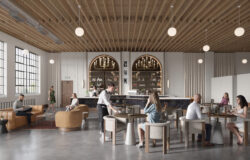
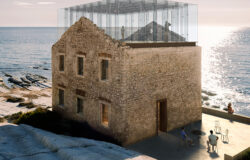





















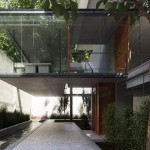
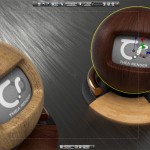
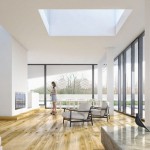
Nice review. Have used Thea for awhile now and have found it to be a very capable render package.
@3d_Nick I been playing with it on and off, but recent updates really look good. I like the Interactive Render very much… Although very similar to V-Ray RT in how it looks it is much more capable in that you can navigate it and select elements inside it…
I been exploring the material lab today and I love it very much too – the preview is very fast which is nice and helps in developing materials much more at ease.
Seems to be interesting.
Thearender does not support GPU computing, right ?
Kind regards
Alain
@Alain Doesn’t seem to support GPU render currently, but the official announcement of v1.1 hasn’t been made yet – so it is best to wait (any day now)
Perhaps @thearender could pick this up and comment about it here 😉
@Alain@thearenderthearender forgot to hook the handle – so here it is again.
Did anyone compare it with V-Ray already ? @ronenbekerman thearender@thearender
@ronenbekerman@thearender I’m not sure if this is up to date but I found this roadmap which suggests GPU is slated for v1.3 https://www.thearender.com/downloads/TheaRenderRoadmap.pdf
Really interesting review. As a Maxwell user I was really impressed by the features which Thea has that Maxwell doesn’t. The ability to easily compare renders, the biased option, and volumetrics all stood out to me. I’ve been turned off by the quality of Thea’s gallery images but I’m going to give it a shot.
@brodiegeers Probably due to age of product and usage duration of client base… I’m giving it a go to now 😉
yes, i think it’s just because Thea is still very young and user numbers are far lower than say Vray users. also, the gallery on the home page unfortunately hasn’t been updated in a while. there are some great renders on the Thea forum gallery though.
@brodiegeers Yes I thought the same about the quality:
The most examples in the gallery do not have a good quality.
Hi All,
Thea Render 1.1 was officially released today to the public – checkout the new post about it with a new video demo-reel…
https://www.ronenbekerman.com/thea-render-1-1-released/
@MartinBrinks it crashes like hell.
@Nonius3D Did you fix it – or is it unfixably unstable? #arion1.5.1
@MartinBrinks I found 1.5.2 on their ftp and that is stable :-b
@MartinBrinks yo, you use thearender yes? there only plugin for C4d r11.5? greetz!
s.
@Nonius3D No, haven’t tested it yet – and Octane is only for nvidia, but Vray just saved my bacon yet again, I think I should stick with it
@MartinBrinks 🙂 the site, it’s examples and the demo didn’t convince me.
Hello
Where can I find those 7 models of grass ?
how to know that render is being completed in thea window???????
FaisalRazzaq What render method are you using?